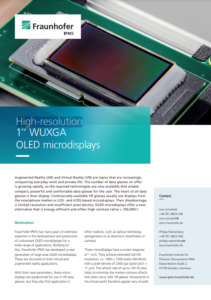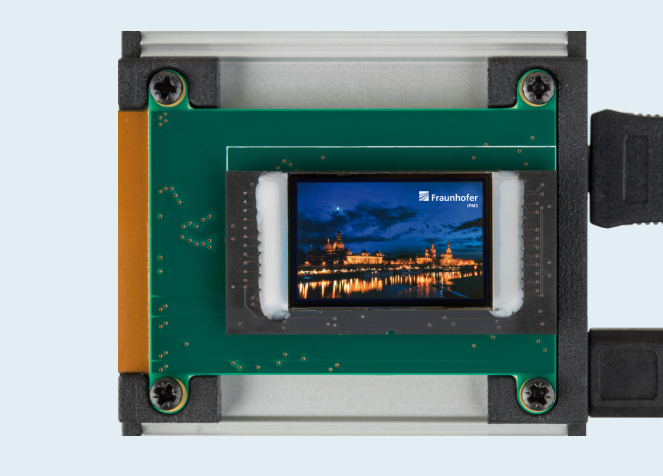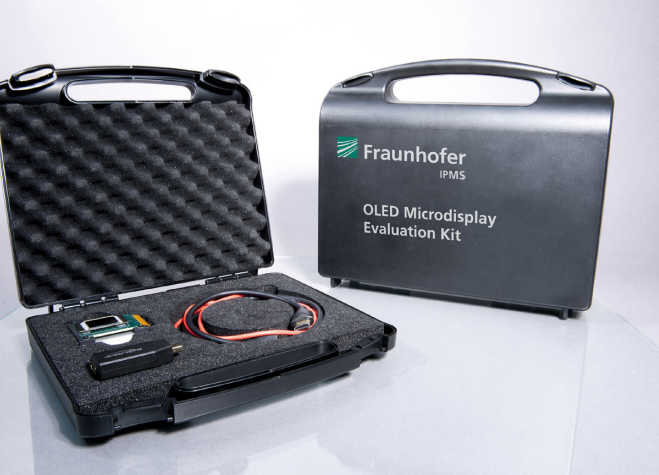Augmented Reality (AR) and Virtual Reality (VR) are topics that are increasingly conquering everyday work and private life. The number of data glasses on offer is growing rapidly, as the required technologies are now available that enable compact, powerful and comfortable data glasses for the user. The heart of all data glasses is their display. Commercially available VR glasses usually use displays from the smartphone market or LCD- and LCOS-based microdisplays. Their disadvantage is limited resolution and insufficient pixel density. OLED microdisplays offer a new alternative that is energy-efficient and offers high contrast ratios > 100,000:1.
Motivation
Fraunhofer IPMS has many years of extensiven expertise in the development and production of customised OLED microdisplays for a wide range of applications. Building on this, Fraunhofer IPMS has developed a new generation of large-area OLED microdisplays. These are focussed on both virtual and augmented reality applications.
With their new parameters, these microdisplays are predestined for use in VR data glasses, but they also find application in other markets, such as optical metrology, optogenetics or as electronic viewfinders in cameras.
These microdisplays have a screen diagonal of 1 inch. They achieve extended full-HD resolution, i.e. 1920 × 1200 pixels (WUXGA), with a pixel density of 2300 ppi (pixel pitch = 11 µm). The refresh rate of up to 120 Hz also helps to minimize the motion sickness effects that often occur with VR glasses. Movements in the virtual world therefore appear very smooth.



